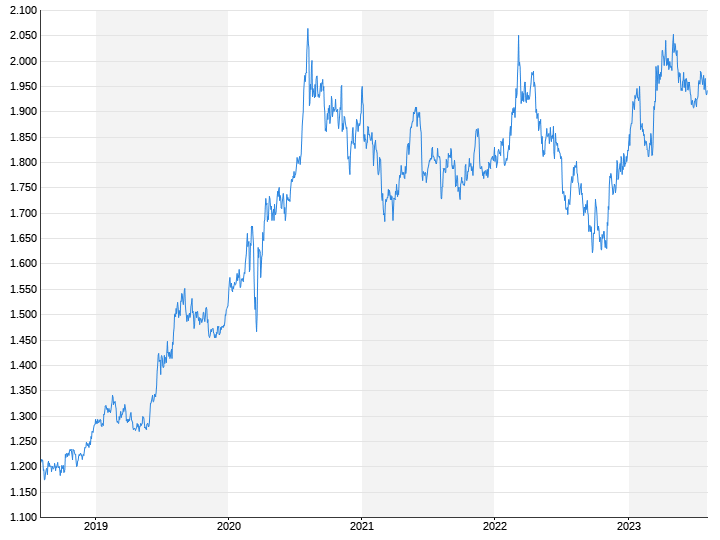Two grams of gold per ton of rock
The safe haven gold is also a very dirty one
By Udo Trichtl
8/6/2023 5:06 p.m
Whether gold is a good investment or not is debatable. There is no dispute about the devastating social and ecological consequences of the mining business. Clean alternatives such as “green” bars and coins are the exception. They are not in the vaults of the central banks.
Gold showed a relatively stable performance in the second quarter: The demand for gold – consisting of the purchases of the central banks, the jewelry, tech and investment sectors – fell slightly by two percent year-on-year to around 921 tons. But if you add over-the-counter (OTC) trading, which can have a significant impact on the price of gold, demand even rose by seven percent compared to 2022, according to the latest gold demand report from the industry association World Gold Council (WGC). All in all, the price of gold in US dollars is up six percent year-to-date and stands today at US$1934.57 per troy ounce.
The central banks made the largest purchases: By the end of June, they packed 387 tons of gold into their vaults, more than ever before. Among other things, this has to do with the fact that more countries want to reduce their dependence on western reserve currencies. The market for private investors, on the other hand, does not offer a uniform picture: While Turkish investors stocked up heavily on gold in view of the galloping inflation in their country, interest among German investors collapsed. They bought 78 percent fewer bars and coins in the second quarter than in the year-ago quarter. WGC chief market strategist John Reade explains this in the “Handelsblatt” interview with the strong interest rate environment. Gold does not yield any current income and is therefore becoming increasingly unattractive as interest rates on savings deposits rise.
The dark side of investing
Whether or not gold is a good investment in the current economic situation is a hotly debated and emotional issue. What is often barely mentioned in the gold market reports are the still catastrophic social and ecological effects of the shiny precious metal. On average, there is no more than one to two grams of gold per ton of rock – depending on the mining area, a little more or less.
In order to dig for gold, massive interventions in the earth’s surface are necessary. Before gold can be further processed as an investment, jewelry or in smartphones, chemical processes separate the precious metal from the rock. The mine operators often use highly toxic chemicals such as arsenic, mercury and cyanide. The environmental protection organization WWF (World Wide Fund For Nature) criticizes that gold mining contaminates water bodies and leads to a loss of biodiversity through deforestation. In addition, sometimes extreme working conditions prevail in the gold mines, especially those in the Global South. Miners are exploited. UNICEF reports on life-threatening child labor.

The demand for fair trade gold is increasing. This primarily affects the jewelry industry. “Green” bars and coins, such as those used for investing, are still a niche product. Less than one percent of the world’s gold comes from fair trade. This also has something to do with the group of buyers: For many people who see gold as an investment, ethical and sustainable aspects are of relatively little importance. At least that is what an online survey by the magazine “Institutional Money” suggests, also from the second quarter. Accordingly, 41 percent of the participants stated that they “do not care at all” about sustainability in gold investments. Only every fourth survey participant considers the topic of sustainability to be “very important”. The magazine does not disclose how many people voted online.
Those who belong to the minority who care about environmental destruction and horrendous working conditions pay attention to recognized seals of quality such as Fairmined and Fairtrade Gold or to the voluntary certification program “Initiative for Responsible Mining Assurance” (IRMA). By buying Fairtrade gold, investors finance better living and working conditions for the gold miners. Child labor is prohibited in Fairtrade certified mines. In addition, certified gold bars come neither from crisis areas nor from deforested rainforests. There is a list of companies that work with the organization Fairmined here.
An alternative to mined gold is recycled gold from jewelry and e-waste. Recycled gold accounts for only around a quarter of the world’s gold supply. From the point of view of WWF Germany, there is enormous potential in recycling, a large part of today’s gold mining is simply unnecessary. In order to achieve noticeable progress, a greater sense of responsibility among buyers is needed.
The article first appeared at Capital.de
